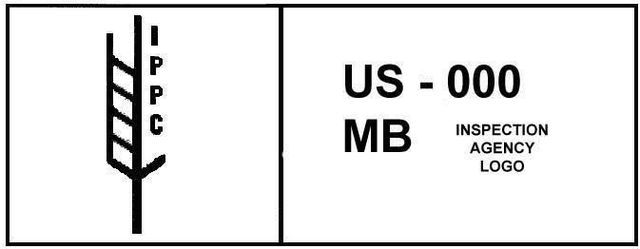International Standards For Phytosanitary Measures No. 15 is an International Phytosanitary Measure developed by the International Plant Protection Convention (IPPC) that directly addresses the need to treat wood materials of a thickness greater than 6mm, used to ship products between countries. Its main purpose is to prevent the international transport and spread of disease and insects that could negatively affect plants or ecosystems.
ISPM 15 affects all wood packaging material and requires that they be debarked and then heat treated or fumigated with methyl bromide, and stamped or branded with a mark of compliance. This mark of compliance is colloquially known as the "wheat stamp". Products exempt from the ISPM 15 are made from an alternative material, like paper, plastic or wood panel products.
A photo of the IPPC seal on a wine shipping crate
Wooden crate of clementines (mandarins) from Morocco, showing the ISPM 15 logo in the lower-left corner (MA for Morocco, from the French "Maroc") in 2010.
Sample ISPM logo showing the MB for methyl bromide treatment of the wood.
A pallet is a flat transport structure, which supports goods in a stable fashion while being lifted by a forklift, a pallet jack, a front loader, a jacking device, or an erect crane. Many pallets can handle a load of 1,000 kg (2,200 lb). While most pallets are wooden, pallets can also be made of plastic, metal, paper, and recycled materials.
The classic wooden pallet, with a glove for scale.
A plastic skid with nine legs, which can be lifted from all four sides. This type of transport is commonly called a pallet, but since it has no bottom it is technically a skid.
A metal pallet with removable beams, in this case for firewood
Automated palletizer of bread with industrial KUKA robots at a bakery in Germany







